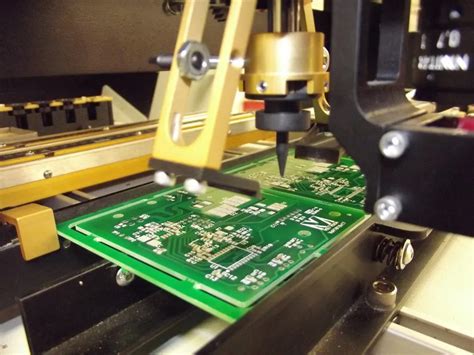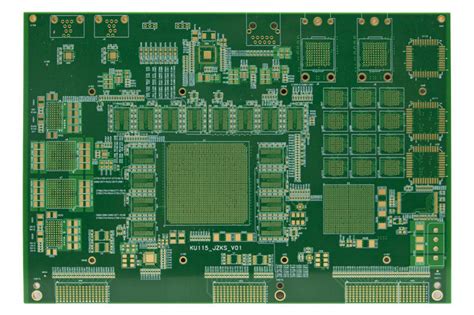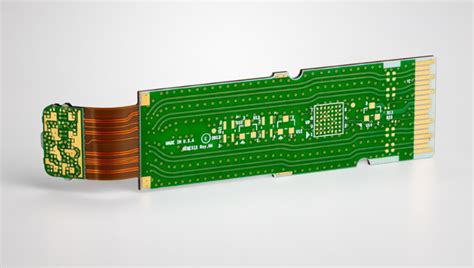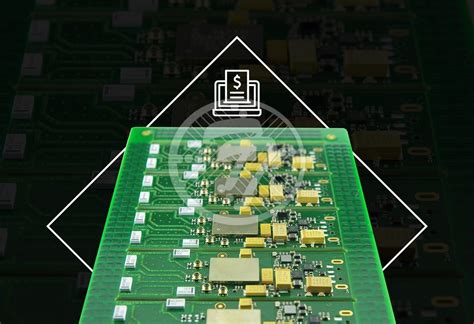Top Circuit Card Assembly Manufacturers Driving Innovation Today
Key Takeaways
In exploring the landscape of circuit card assembly (CCA), it is evident that this sector is pivotal in the electronics industry. The leading pcb assembly manufacturers are not just suppliers; they are innovators driving significant advancements in the way electronic devices are manufactured. Their expertise in pcba techniques, ranging from surface mount technology (SMT) to through-hole practices, is reshaping the industry. These manufacturers are continually adopting cutting-edge technologies, such as advanced robotics and machine learning, to enhance efficiency and precision in production processes. Furthermore, they play an essential role in promoting environmental sustainability by integrating eco-friendly materials and practices into their operations. Success stories from various manufacturers highlight not only their adaptability but also their commitment to pushing the boundaries of what is possible in circuit card assembly. As we look ahead, the convergence of automation and innovation promises a brighter future for electronic manufacturing, making it an exciting time for both industry stakeholders and consumers alike.
Introduction to Circuit Card Assembly: The Backbone of Electronics
Circuit card assembly (CCA) plays a crucial role in the modern electronics industry, acting as the essential backbone that supports electronics products ranging from consumer devices to complex industrial machinery. At the heart of pcb assembly lies the meticulous process of integrating various electronic components onto a substrate to create a functional circuit board, commonly referred to as a printed circuit board assembly (PCBA). This intricate process involves multiple stages, including the design, fabrication, and assembly of circuit boards, which collectively contribute to ensuring reliability and performance.
One key factor defining pcb assembly is the precision required in component placement and soldering technology. Advanced techniques ensure that components such as microchips, resistors, and capacitors are accurately positioned on the board, which is critical for maintaining signal integrity. Moreover, the continual evolution of manufacturing technologies has led to innovations such as surface mount technology (SMT) and through-hole technology that enhance efficiency and minimize errors during PCBA production.
To further illustrate this process and its significance in electronic manufacturing, let’s look at a summary table highlighting key components involved in circuit card assembly:
| Component | Function |
|---|---|
| Microchips | Perform processing tasks |
| Resistors | Regulate electrical current |
| Capacitors | Store energy for later use |
| Inductors | Filter frequencies in electric signals |
By fostering innovation in processes and materials applied in circuit card assembly, manufacturers are not only streamlining operations but also enhancing product quality. As we delve deeper into this article, we will explore more about innovative techniques that continue to shape this foundational aspect of electronic manufacturing.
Key Players in the Circuit Card Assembly Industry
The circuit card assembly (CCA) industry is home to several key players that are driving immense advancements in electronic manufacturing. Companies dedicated to pcb assembly and pcba are increasingly focusing on innovation, greatly enhancing product quality and efficiency. Notable manufacturers such as Flextronics, Jabil, and Hon Hai Precision Industry have established themselves through streamlined processes and cutting-edge technologies, ensuring that their assemblies meet rigorous quality standards. They adopt innovative techniques, including advanced soldering methods, surface mount technology (SMT), and automated optical inspection (AOI), which drastically reduce errors and increase production speed.
“Incorporating the latest technologies in their operations allows manufacturers to remain competitive in a rapidly evolving market.”
Moreover, these players are not just focused on efficiency; they are also leading the charge toward sustainability in their production methods. By implementing eco-friendly materials and practices, they contribute positively to environmental goals while maintaining excellent product performance. As the demand for more complex electronic devices grows, so does the need for robust pcb assembly solutions that can scale with technological advancements. The collaboration between manufacturers and technology providers promotes an ecosystem of continuous improvement that will undoubtedly shape the future of pcba.
Innovative Techniques Transforming Circuit Card Assembly
In the realm of electronic manufacturing, pcb assembly stands out as a vital process that continually evolves through innovative techniques. Manufacturers are adopting advanced methodologies to enhance the pcba (printed circuit board assembly) process, focusing on precision and efficiency. One notable innovation is the implementation of surface mount technology (SMT), which allows for higher circuit density and greater performance while reducing overall manufacturing costs. Additionally, the use of automated optical inspection (AOI) systems ensures that defects are detected early in the assembly process, significantly improving product reliability. Another transformative technique is the integration of multi-layer PCBs, which enable complex circuit designs to be realized in a compact format, catering to the ever-increasing demand for multifunctional electronic devices. Moreover, manufacturers are exploring flexible circuitry, which allows for innovative applications in various industries, including wearables and IoT devices. These innovative techniques not only optimize the production workflow but also pave the way for future developments in circuit card assembly, ensuring that manufacturers remain competitive in a fast-paced market driven by technological advancements.

Cutting-Edge Technologies in Circuit Card Manufacturing
The landscape of circuit card assembly (CCA) is rapidly evolving due to the continuous integration of cutting-edge technologies. In this modern age, pcb assembly processes are being transformed by the advent of advanced techniques such as surface mount technology (SMT), which allows for denser circuit layouts and improved performance. This not only optimizes space but also enhances functionality, paving the way for more intricate pcba designs. Furthermore, innovations in automation and robotics are playing a pivotal role in enhancing production efficiency and accuracy. Automated soldering systems and pick-and-place machines are crucial in reducing human error and increasing scalability. Moreover, the introduction of artificial intelligence (AI) in quality control is enabling manufacturers to detect defects more swiftly and accurately, ensuring that production standards meet or exceed customer expectations. These innovative methodologies not only streamline manufacturing processes but also significantly reduce time-to-market for new electronic products. As manufacturers embrace these advancements, they contribute significantly to shaping the future of electronic manufacturing, driving growth, and maintaining competitiveness in an ever-evolving industry landscape.
The Role of Automation in Enhancing Production Efficiency
In the highly competitive realm of pcb assembly and pcba manufacturing, automation plays a pivotal role in enhancing production efficiency. By incorporating advanced technologies such as robotic arms and automated assembly lines, manufacturers are significantly reducing human error and increasing the speed of production processes. These innovations drive circuit card assembly operations to achieve higher levels of precision and consistency. With automated inspection systems, companies can ensure that each circuit card assembly meets stringent quality standards, thus maximizing yield rates and minimizing waste. Additionally, automation enables real-time monitoring of production metrics, allowing for quick adjustments and continuous improvement in operations. As manufacturers increasingly adopt these technologies, the landscape of pcb assembly continues to evolve, leading to a more agile production environment capable of meeting diverse customer demands while adhering to established timelines. This proactive approach not only boosts productivity but also positions manufacturers at the forefront of industry innovation, allowing them to respond adeptly to market changes and technological advancements.
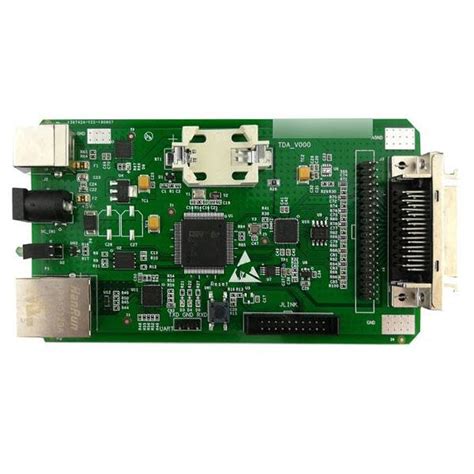
Environmental Sustainability in Circuit Card Assembly Practices
The demand for pcb assembly has surged as technology advances, but with this growth comes the responsibility of ensuring that manufacturing practices are environmentally sustainable. Leading manufacturers in the circuit card assembly industry are increasingly adopting eco-friendly materials and production methods to mitigate their environmental impact. For example, many have transitioned to using lead-free solder and recyclable substrates, which not only reduce toxic waste but also enhance the overall sustainability of pcba processes. Furthermore, innovative waste management systems are being implemented; these systems ensure that any waste generated during production is minimized and properly disposed of. The use of energy-efficient machinery is another vital step being taken by these manufacturers; by optimizing energy consumption, they not only lower their carbon footprint but also reduce operational costs. The integration of renewable energy sources into manufacturing facilities is also a growing trend, showcasing a commitment to sustainable practices. Overall, the commitment to environmental sustainability within circuit card assembly is not only beneficial for the planet but also aligns with consumer demand for greener products and practices in electronics manufacturing. As these circuit card assembly manufacturers continue to innovate and implement sustainable strategies, they pave the way for a more responsible future in electronic manufacturing.
Case Studies: Success Stories of Leading Manufacturers
The circuit card assembly (CCA) industry has witnessed numerous success stories that highlight the innovative spirit and technological advancements of its key players. One such example is a leading manufacturer that redefined its pcb assembly processes by incorporating advanced automation and smart technologies. This approach not only elevated production efficiency but also significantly reduced time-to-market for new products, an essential factor in the highly competitive electronic landscape. Another notable case involves a pcba provider that embraced sustainable manufacturing practices, utilizing eco-friendly materials and methods to minimize environmental impact while maintaining high-quality standards. These efforts reflect a growing trend within the industry, where manufacturers are not only focused on profitability but also on their responsibility towards the planet. Furthermore, there are instances where companies have leveraged cutting-edge technologies, such as artificial intelligence and machine learning, to enhance their production lines, enabling them to anticipate defects proactively and optimize operations in real time. As these case studies illustrate, leading manufacturers in the CCA sector are not merely participants in the market; they are transformative forces that continuously push boundaries, innovate their methodologies, and contribute significantly to shaping the future of electronic manufacturing.
Future Trends and Predictions for Circuit Card Assembly
As technology continues to evolve at a rapid pace, the pcb assembly industry must adapt to meet new demands and challenges. One of the most significant trends shaping the future of pcba is the integration of advanced materials, such as flexible and biodegradable substrates, which are poised to revolutionize traditional manufacturing processes. This shift not only enhances design capabilities but also promotes environmental sustainability, a critical focus area for manufacturers. Furthermore, the advent of smart manufacturing technologies—including Internet of Things (IoT) connectivity—will enable real-time monitoring and optimization of production lines, thereby improving efficiency and reducing waste in circuit card assembly operations.
Another noteworthy trend is the rise of automation within pcba processes. Employing robotics and artificial intelligence can drastically enhance precision while minimizing human error, which will be vital for maintaining competitiveness in a fast-paced market. Companies are likely to place greater emphasis on developing highly skilled workforces that can interface with these sophisticated systems. Moreover, with the growing complexity of electronic devices, there will be an increased reliance on design-for-manufacturability (DFM) best practices to ensure that circuit card assembly meets stringent quality standards.
In addition to these shifts in practice and technology, cybersecurity will become an increasingly critical factor in circuit board production as interconnected devices proliferate. Manufacturers must adopt robust security protocols to protect production systems from potential threats that could disrupt operations or lead to intellectual property theft. Overall, the landscape for pcb assembly is set for profound transformation driven by innovation, sustainability concerns, and heightened security measures—ensuring that manufacturers remain agile in a dynamic technological environment.
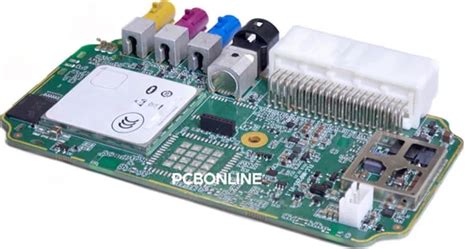
Conclusion
In summary, the landscape of pcb assembly is marked by a dynamic interplay between innovation and efficiency, positioning circuit card assembly manufacturers as pivotal players in the electronics industry. The advancements in pcba processes have led to improved production methods, enabling companies to meet the ever-growing demand for high-quality electronic components. These manufacturers are not only focused on enhancing productivity through cutting-edge technologies but also on sustainable practices that contribute to a greener environment. As the industry evolves, staying ahead of the curve in terms of innovation is crucial. The collaborative efforts among leading firms promote knowledge-sharing and drive collective progress, ensuring that circuit card assembly remains at the forefront of technological advancements. Ultimately, by embracing new methodologies and fostering an environment conducive to creativity, circuit card assembly manufacturers are well-positioned to influence future trends and solidify their impact on the global market.
FAQs
Q: What is pcb assembly?
A: PCB assembly refers to the process of assembling electronic components onto a printed circuit board (PCB), creating a functional electronic device. This involves various steps including soldering, surface mount technology, and ensuring quality control.
Q: How does pcba differ from PCB manufacturing?
A: While PCB manufacturing focuses solely on creating the circuit board itself, PCBA (Printed Circuit Board Assembly) encompasses the assembly process where components are mounted onto the board, making it ready for use in electronic devices.
Q: What technologies influence the quality of circuit card assembly?
A: Technologies such as automated soldering, surface mount technology (SMT), and advanced testing methods significantly enhance the quality of circuit card assemblies, ensuring reliability and efficiency in production.
Q: What role does automation play in pcb assembly?
A: Automation elevates pcb assembly by reducing human error, increasing production speed, and improving consistency across large production runs. It allows manufacturers to meet high-demand environments while maintaining precision.
Q: Why is environmental sustainability important in circuit card assembly?
A: Environmental sustainability is crucial as it helps reduce waste and promotes responsible sourcing of materials. Many manufacturers are adopting eco-friendly practices to minimize their impact on the environment while maintaining high-quality standards in their pcba processes.

